Hemlocks, Pitch Pines And Beavers: Another Hike In The Penrose Swamp Barrens
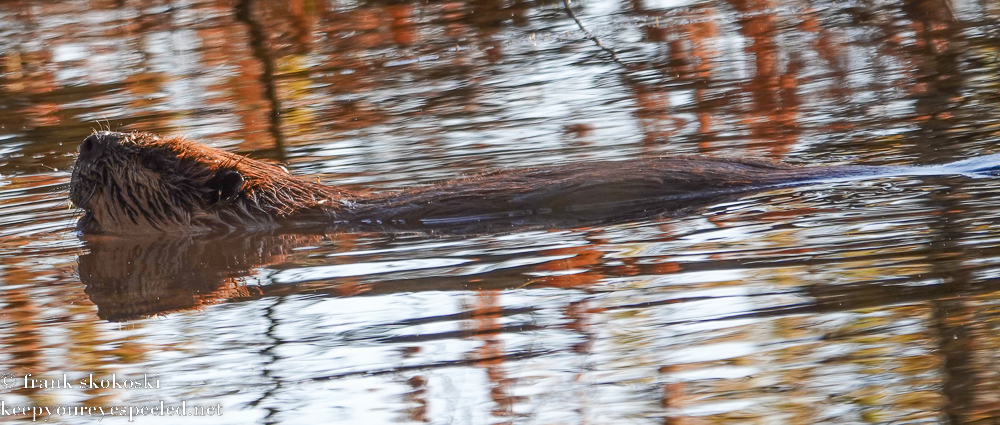
Instead of my usual weekend visit to the Susquehanna Wetlands I decided to return and explore the Penrose Swamp Barrens in Carbon County on Sunday. This 2700 acre wetland and forest is now a part of the Weiser State Forest. It was a sunny and a seasonably cold December morning with temperatures in the mid 20’s. There was no wind so it was a nice day to hike and explore this pristine tract of land. 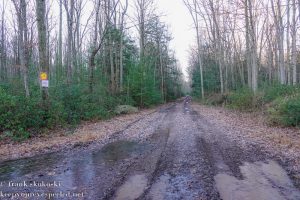
Like I did on my last visit, I parked on the Buck Mountain Road a few miles outside of the town of Weatherly. This time I was the only vehicle at the parking area. There was no hunting on this Sunday. I followed the narrow access trail to a electric utility pole line. The trail went through one of the many wetlands in the 2700 acre tract. . It was muddy from the recent rains, but, fortunately, much of the ground was frozen because of the cold temperatures. 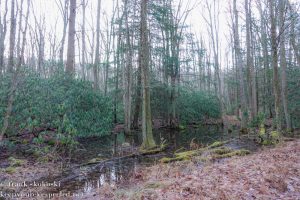
The trails followed the utility line into the protected areas but there were still some private lands along this right of way. They have been posted since my last hike here two weeks ago. 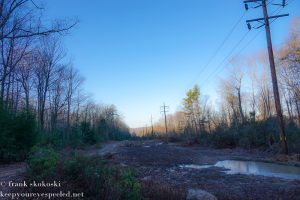
It was about a 1/4 mile hike until I entered lands that are now part of the Weiser State Forest. The road along the way passes through another wetlands containing many wetlands plants. There were large area of cattails in the wetlands. 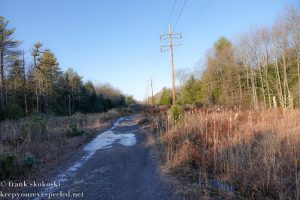
And, as I observed last week, many of the endangered Hartford or American climbing ferns were growing all along the trail. You can read more about these unique ferns in my last blog ( topics in my previous blogs can be found using the search tool in my blog).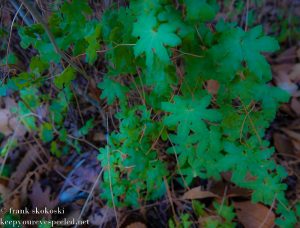
I am not sure, but my PictureThis plant identification app identified this as roundleaf sundew, another rare and endangered plant. 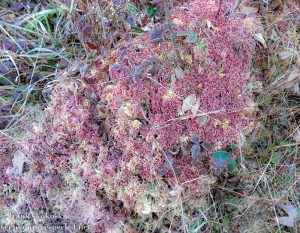
The app identified this as Hickey’s or Pennsylvania clubmoss. I have not seen this species of clubmoss before. Next to it were many of the teaberries growing in the wet soils. 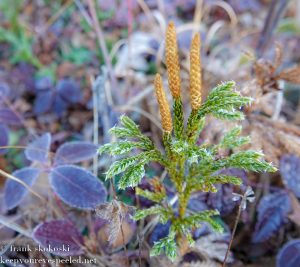
Another native plant, tawny cotton grass could be seen in the along in the wetlands.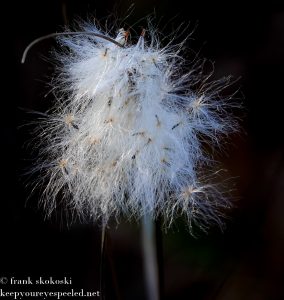
There were also many withered bracken ferns 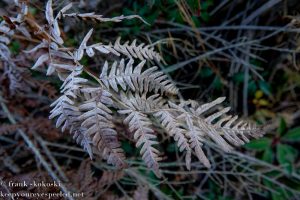
and pearly everlasting flowers. 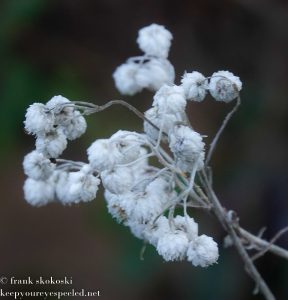
There were many rhododendrons scattered in the wetlands. The leaves of these evergreen native flowers curl up in the cold. 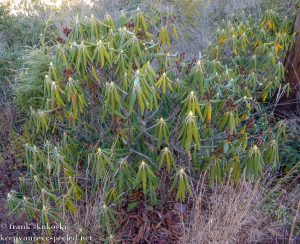
These buds will fill the wetlands with color when they bloom next Spring.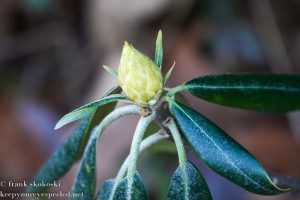
Some of the other shrubs I was able to identify in the wetlands were the common winterberries now displaying their bright red berries, contrasting the deep blue skies, 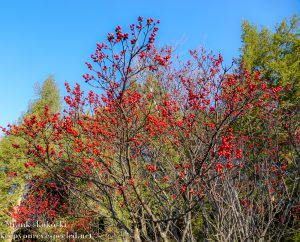
There were also may high bush blueberry bush now leafless. They will produce many delicious berries next Summer and could attract bears. I will hopefully see, and photograph one on a hike. I am always looking for bears to photograph. 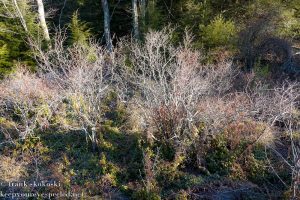
There were also many dried milkweed pods and seeds in the wetlands too, which means the barrens will also be a good place to photograph bees and butterflies next Summer. 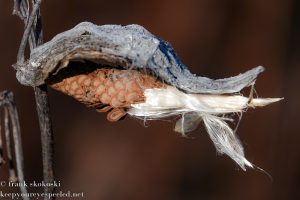
There was not a lot of wildlife activity on this cold morning. I did see a whitetail deer run across the road but, it looked like on this December morning, I would again only be photographing birds. And not many of them . I heard a lot of American crows cawing in the trees in the distance but only saw these two that flew overhead. 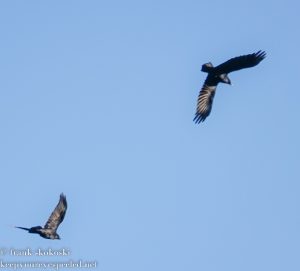
The only other birds in the wetlands along the utility pole line were a small flock of black-capped chickadees. They were fluttering about and chattering in the trees and cattails in the wetlands. 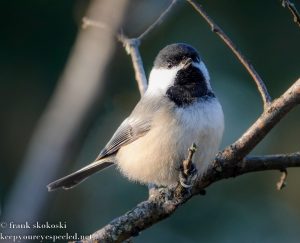
I followed the pole line out for about another 1/2 mile and then left the pole line and followed the old Buck Mountain Railroad right of way. There were still some of the wooden tracks visible on this 100 year old railroad . 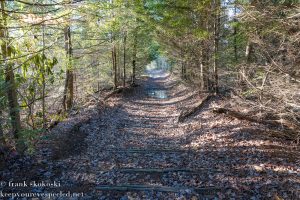
This trail also took me through some wetlands and past a small pond. I have seen Canada geese nesting on this pond in the Spring. 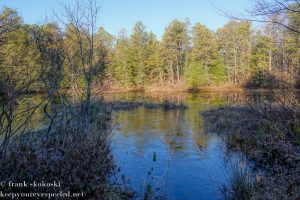
After the pond the trail entered s thick rhododendron and hemlock woodland. Walking through the old hemlocks and rhododendrons, I was taken back in time. I imagined Native Americans following the creeks and streams in woodlands similar to this as they made their way from the Lehigh to the Susquehanna Rivers. The first Europeans to explore this vast area north of the Blue Mountain between the two rivers named it St. Anthony’s Wilderness. 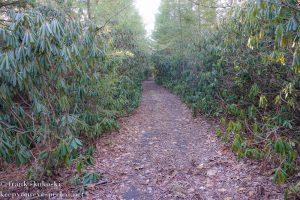
The old railroad right of way met up with the old Lehigh Valley railroad right of way. It was the railroad that brought my grandparents and many other immigrants to the coal fields of Hazleton after their arrival in Ellis Island. The old Beaver Meadows railroad (one of the first railroads in the United States) met the old Lehigh Valley Railroad here, on the other side of the Black or Hazle Creek. The railroad here is still active. 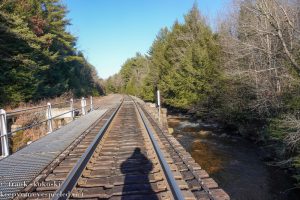
I walked north along the active railroad tracks, it appears the State Forest also acquired a right of way along the railroad tracks when it purchased the Penrose Swamp Barrens. I like walking in this area because of the thick pine forest growing on both sides of the tracks. 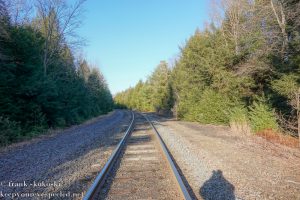
After about a 1/2 mile walking along the tracks, the forest ends and a meadow opens up across from the Penrose Reservoir. I think the Penrose Reservoir is the gem in this beautiful tract of land. It is surrounded by pitch pine and hemlock trees. It’s scenic waters also provide a home to a lot of wildlife. I have seen river otters, beavers, ducks, geese, bitterns on the reservoir and many song birds in the surrounding woods. 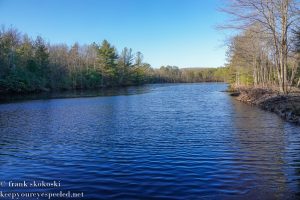
And, on Sunday I was greeted by a pair of beavers who swam toward me as walked along the tracks to the the far side of the lake. One s[plashed it’s tail and retreated but the other swam toward me, occasional splashing it’s tail as if to try and tell me to leave. 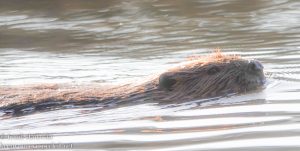
I stayed and it continued to swim in circles, occasionally splashing it’s tail until it finally decided to swam off and join the other beaver. It was another wonderful wildlife encounter here at the Penrose Reservoir. Here is a link to a video on my YouTube channel of the beaver swimming and splashing in the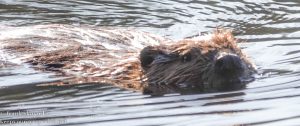 reservoir. https://youtu.be/3BjWSXrBCE4
reservoir. https://youtu.be/3BjWSXrBCE4
After my encounter with the beavers I walked through the pitch pine and hemlock woodlands along the Penrose Creek. The ground was covered with a deep layer of evergreen needles and the aroma of pine filled the cold morning air.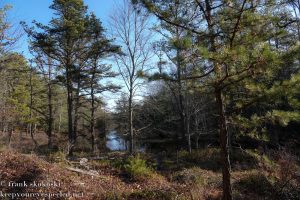
I have never followed the creek upstream before and found a lot of evidence of beaver activity. The town of Beaver Meadows was surely named after the many beavers that inhabited this and the nearby Beaver Creek. This is were coal was first discovered in the Middle Anthracite Coal basin. 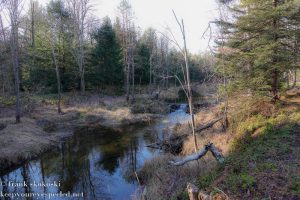
I saw a few more black-capped chickadees scampering on the pine needles. 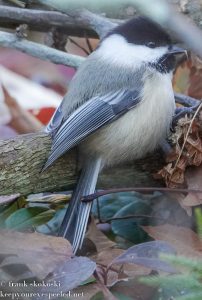
It looked like they were feeding on the withered bracken ferns. 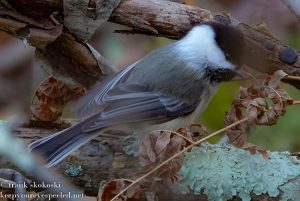
I was able to get this photo of the tiny feet on this common winter resident in our woodlands. 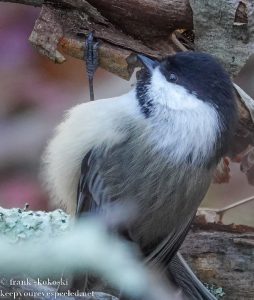
I wanted to continue on my exploration of the Penrose swamp barrens but I had already walked out 2 1/2 miles and wanted to get home to watch the Philadelphia Eagles football game, ( they are doing quite well this year). So I began my hike back, stopping at the reservoir again hoping to see the beavers. They were gone.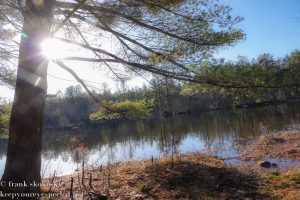
It was a quiet walk back along the railroad tracks, and through the wetlands. 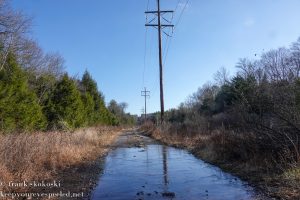
The only other critters I saw were a few noisy blue jays, 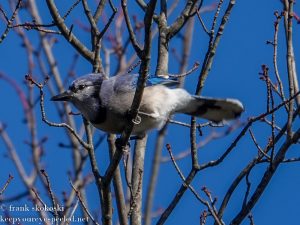
and this downy woodpecker. Here is a link to a gallery on my blog website with some more photos of the critters I saw on my hike in the Penrose swamp. Penrose Swamp critters December 4 2022. 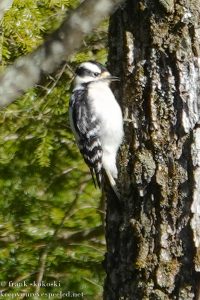
Although I didn’t see as much wildlife as I would have if I visited the Susquehanna Wetlands, I did enjoy my close encounter with the beavers, it was an enjoyable hike in this still pristine wilderness. I hope to return again soon and look forward to exploring this vast 2700 acre addition to our State Forest. I am sure it will be a beautiful area to watch Nature awaken in the Spring. Here is a link to a gallery with some more photos from my hike. Penrose Swamp Barrens December 4 2022. 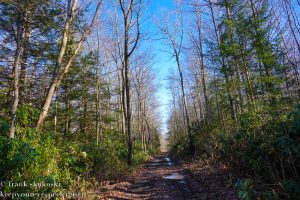
I think having land and not ruining it is the most beautiful art that anybody could ever want to own.
~Andy Warhol
Categories
Recent Comments